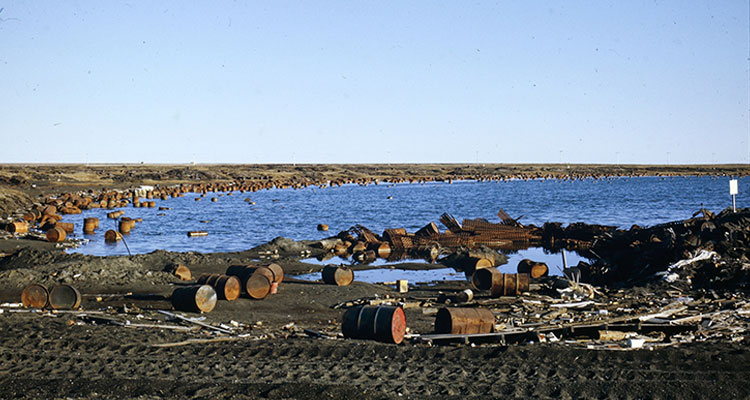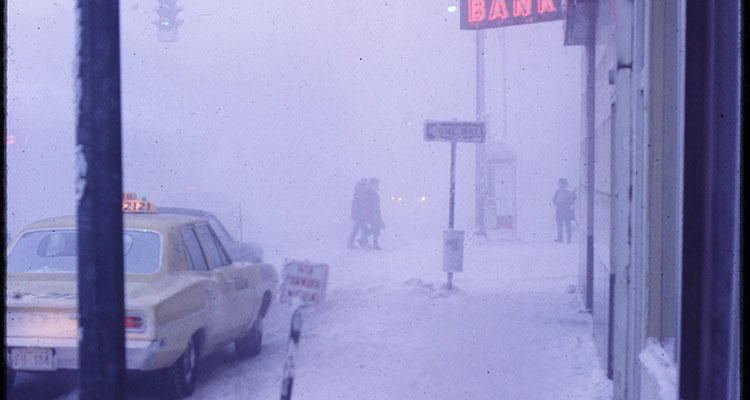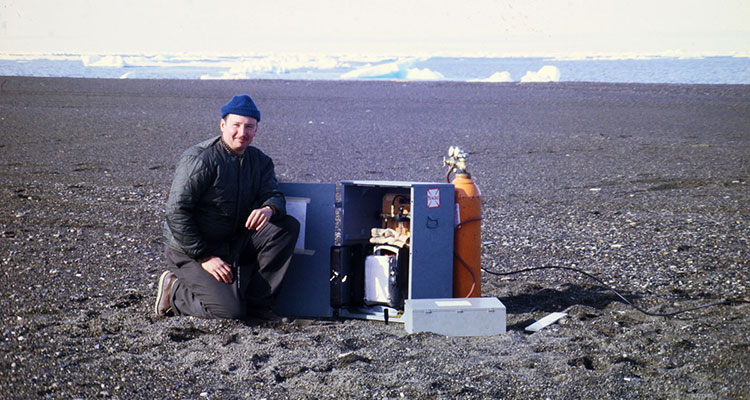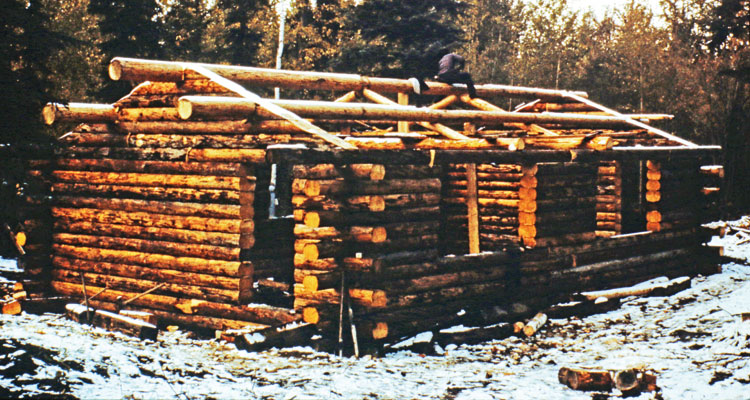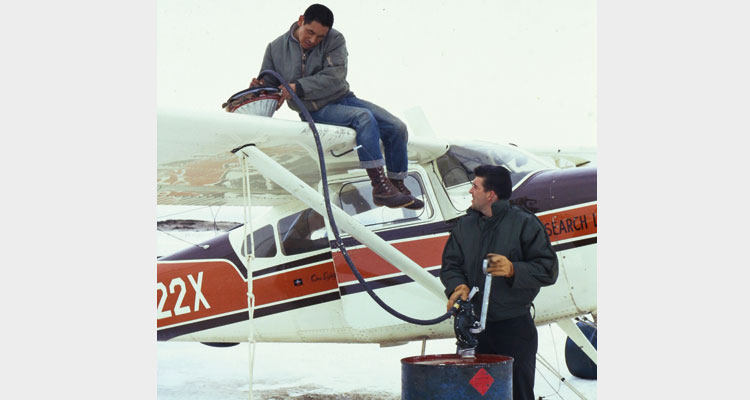Graduate student days at the University of Alaska
Looking back, it all started when I watched the 1960 John Wayne movie North to Alaska. By that time, I had left Stowe and become a student at London University. The idea of studying in America (and specifically in Alaska) took form in 1963 during an apprenticeship in Paris. One day, at the US Information Agency Library, I came across a catalogue for the University of Alaska. The U of A was located in Fairbanks at the end of the Alaska Highway – a distance of some 1500 miles from Dawson Creek, Canada. After reading more about Alaska and its history, I was hooked.
Combining ‘serious’ education with travel caused me first to get an M.Sc. at the University of Pennsylvania, Philadelphia. In the late summer of 1966, I set out for Fairbanks, via Montreal, Winnipeg, Edmonton and Dawson Creek. I was, in earnest but naïve fashion, well prepared. I left England with a short wheelbase Land Rover. I brought with me a 5 pound can of Cadbury Cocoa Powder and a sporterised .303 Lee Enfield rifle. The drive along the highway (then unpaved) proceeded without incident. I detoured at Whitehorse for Dawson City – of Klondike gold rush fame – with its Robert Service cabin and gold dredges. I then crossed the Yukon River by barge, returned to the Alaska Highway via the little community of Chicken, and continued on to Fairbanks.
Fairbanks lies about 100 miles south of the Arctic Circle. My arrival at the U of A was an eye opener. It was very informal compared with most universities (no university tie!). I promptly bought myself a heavy parka with a wolf fur ruff. Fairbanks was an interesting mixture of permafrost, log cabins, float ’planes and bars, with a population then of some 20,000. I studied Arctic Engineering during the first year. A Glaciology course under Prof. Carl Benson resulted in my being given a course research topic measuring temperature profiles in the successive layers of ice that form when rivers freeze in channels under the ice, then subsequently break out. Carl lent me his old truck for this purpose. Being alone in -40F weather, stuck at the bottom of a slippery, ice-covered hill between me and home, was a scary thing for a city boy. Travel opportunities abounded: one was a tour of the Distant Early Warning (DEW) Line radar site at Clear, Alaska. Transportation was provided in the form of a USAF C-47 cargo ’plane. The students were a varied lot. Some were from abroad, others were locals – several of whom homesteaded 20 acres and built their own log cabins. My pastimes consisted mostly of travel, photography and (occasionally) raft racing.
During my first summer in Alaska, I was given the opportunity by Carl to assist in the study of snow drift formation on the North Slope. Transportation was by ski-equipped, single engine ’plane provided by the Naval Arctic Research Laboratory (NARL), with lodging in a wooden ‘bear-proofed’ cabin. The diet consisted mostly of Sailor Boy Pilot Bread and peanut butter. I spent the rest of the summer camped by the Chena River. At the end of the summer, I rented a small log cabin close by. Soon after a major flood occurred, which forced me, along with many others, to take refuge on the high ground of the U of A (but that is another story).
At the end of that first summer I was fortunate to be offered research funding in Physical Oceanography by Prof. Brian Matthews. The research was primarily making measurements of the tides around Alaska and modelling the tides of Cook Inlet. I participated in numerous oceanographic cruises from Juneau into the Gulf of Alaska to take salinity samples and temperature measurements. The following summer (my second in Alaska) I was, again, fortunate to spend some two months at the NARL at Point Barrow. NARL was run by the US Navy. It provided support for scientists studying the Arctic Ocean. I installed and operated a ‘bubbler’ tide gauge on Barrow Spit. We used modified British WW2 weasels for ground transportation. Air transportation was available when needed. The pilots were ex-military and a colourful lot.
Over the next three years, my research activities took me to Iceland, the coast of Greenland, Holland and England. After graduating with a PhD. I left Alaska in mid-winter, taking the Alaska Highway to Skagway. The trip was made memorable due to the rear differential of my vehicle failing precisely in the ‘no man’s land’ between the US and Canadian borders!
Recently, I happened to come across some two hundred colour slides that I had taken during my stay in Alaska. They brought to mind the words of the theme song of that John Wayne movie: “North to Alaska, go north the rush is on…” It was a great way to see the world.
Christian Mungall (Temple 59)






